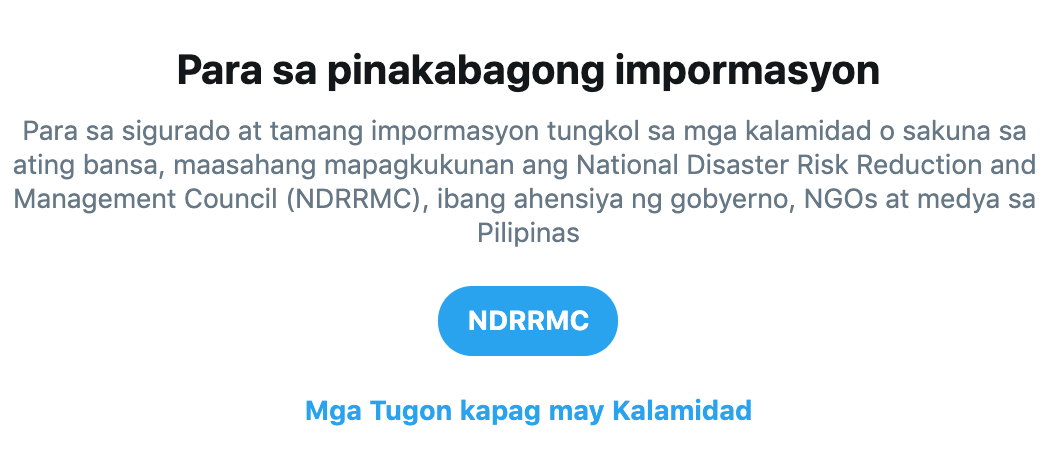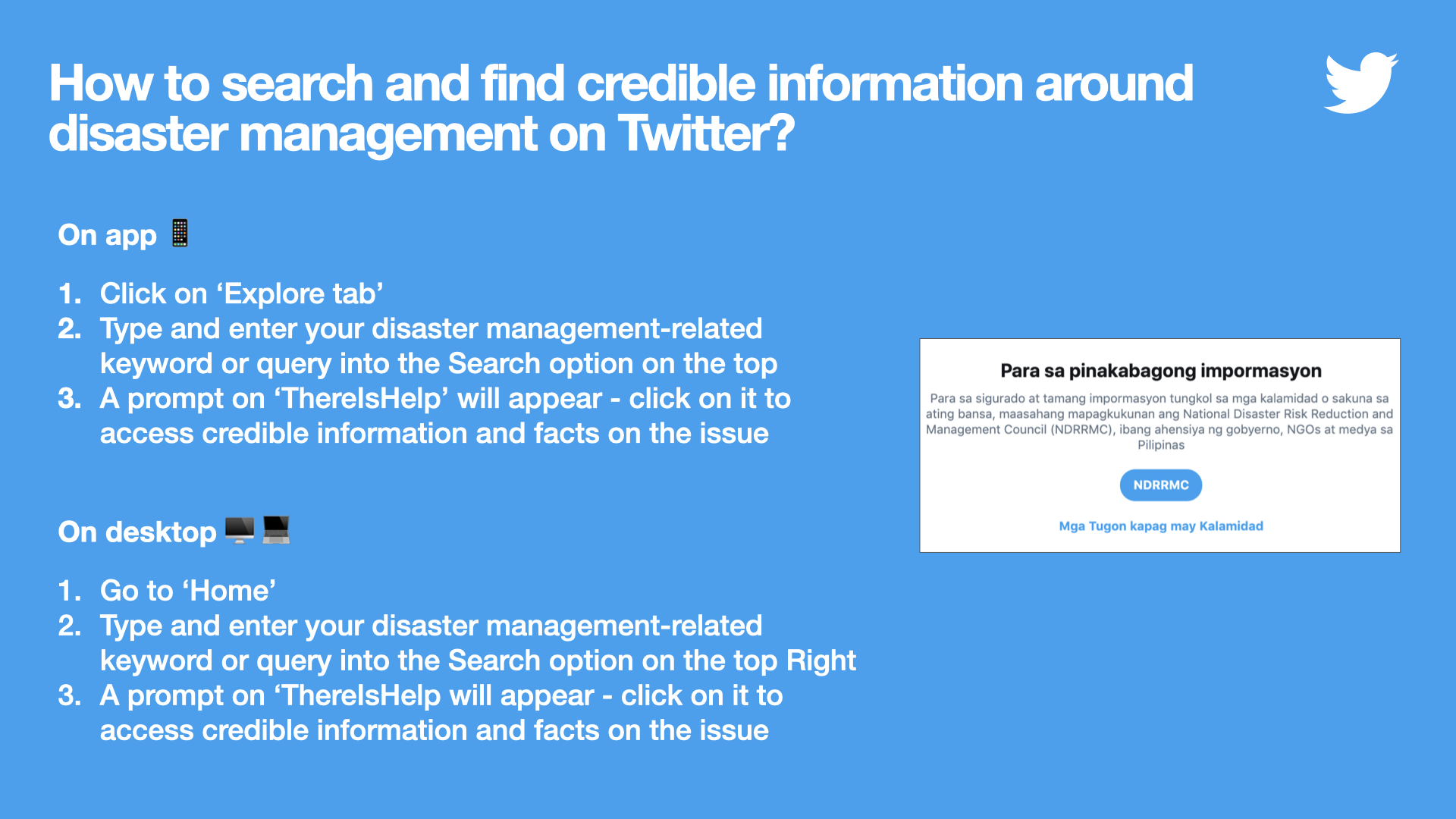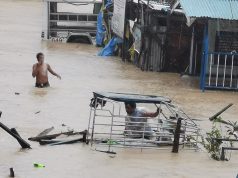
Microblogging platform Twitter recently launched a dedicated search prompt for disaster awareness to help Filipinos find authoritative information in terms of crisis and natural emergencies.
The search prompt also enables the public to be updated on disaster relief and preparedness efforts in the country, as well as contact local authorities in times of distress.
Users will be directed to relevant information and sources of help that are available on the platform whenever they type keywords that are associated with disaster relief.
Keywords include “SagipKalamidad, baha, kalamidad, disaster, floods and earthquake,” among others.


The recently-launched search prompt also directs users to a Twitter list of government agencies, non-government organizations and media outlets working towards disaster response and relief, as well as those reporting the latest news about the crisis.
Filipinos who are looking for support can follow the list and establish contact with credible authorities especially in times of emergencies.
The initiative was made possible in partnership with the National Disaster Risk Reduction and Management Council, Philippine Red Cross, government agencies, NGOs and media outlets to expand efforts in handling disaster situations.

Monrawee Ampolpittayanant, Twitter’s head of public policy and philanthropy in Thailand and the Philippines, said that the initiative is the platform’s way of furthering its commitment to partner with citizens and governments for providing emergency support.
“At its core, Twitter is a real-time and modern version of a town
square. These characteristics make Twitter a uniquely useful place for timely communication, and more so when a disaster strike,” she said in a release.
“Relief teams have time and again turned to Twitter to connect with people on-the-ground, to share real-time information on the provision of aid, rescue operations and emergency resources,” Ampolpittayanant added.
The initiative comes at a time when the Philippines, a tropical country annually subject to monsoons and hurricanes, could potentially experience a surge of rainfall in the coming months due to La Niña.
La Niña is a natural phenomenon characterized by “unusually cooler than average sea surface temperatures in the central and eastern equatorial Pacific,” according to the Philippine Atmospheric, Geophysical and Astronomical Services Administration.
The state weather bureau said that there is “more than fifty percent” chance a weak La Niña will develop in either late October or November 2020 which may last until the first quarter of 2021.
“With this development, above normal rainfall conditions are expected over some parts of the country in the coming several months. Potential adverse impacts of the developing La Niña; include floods and landslide over vulnerable areas with varying magnitude,” PAGASA said.









